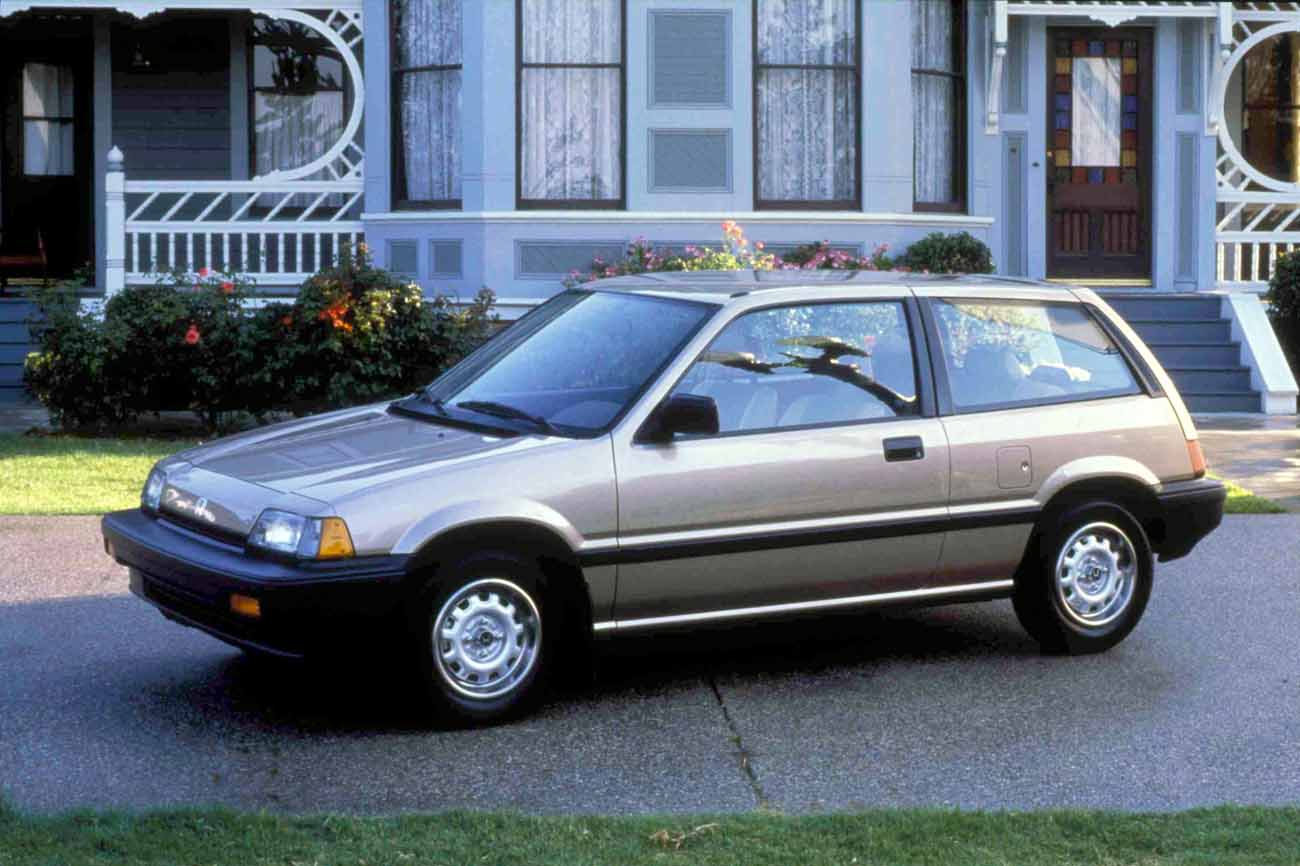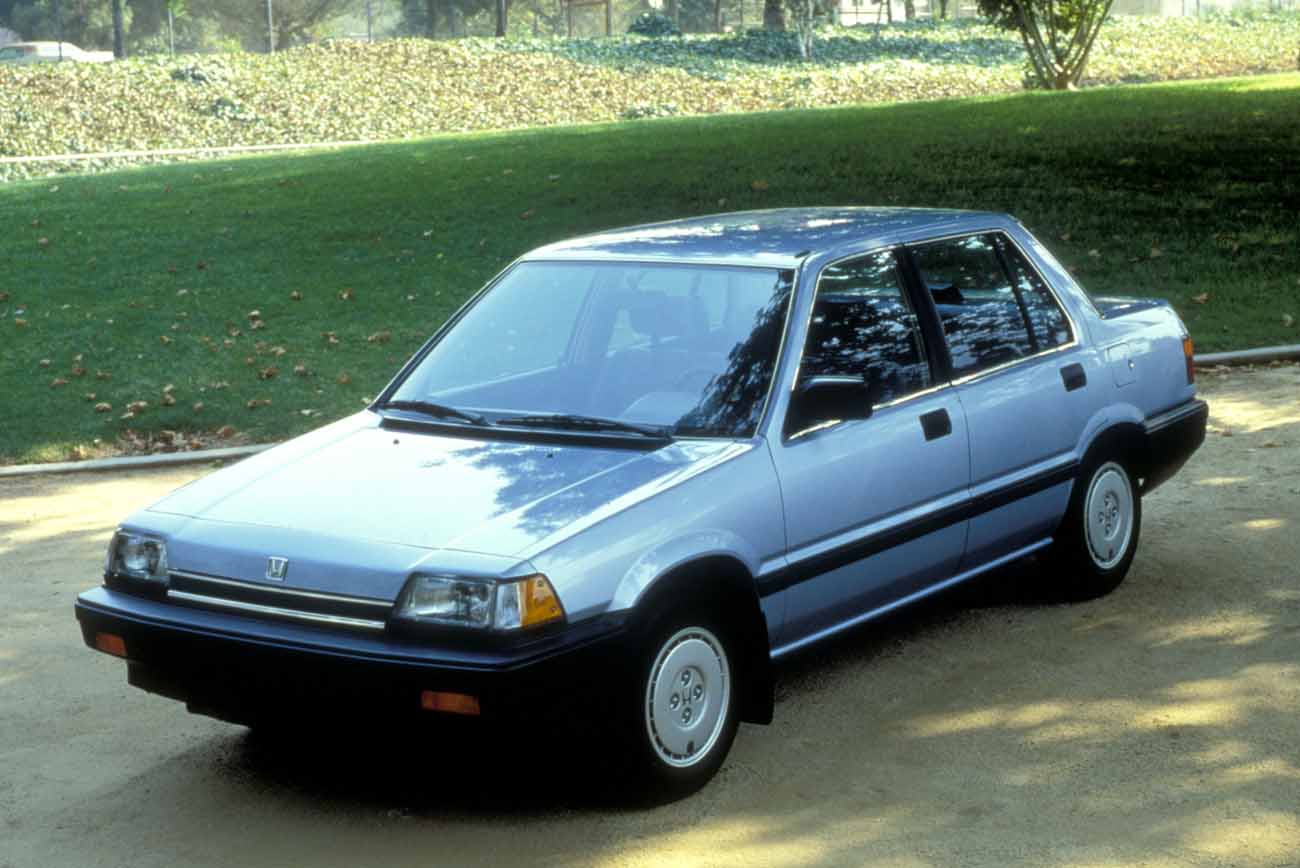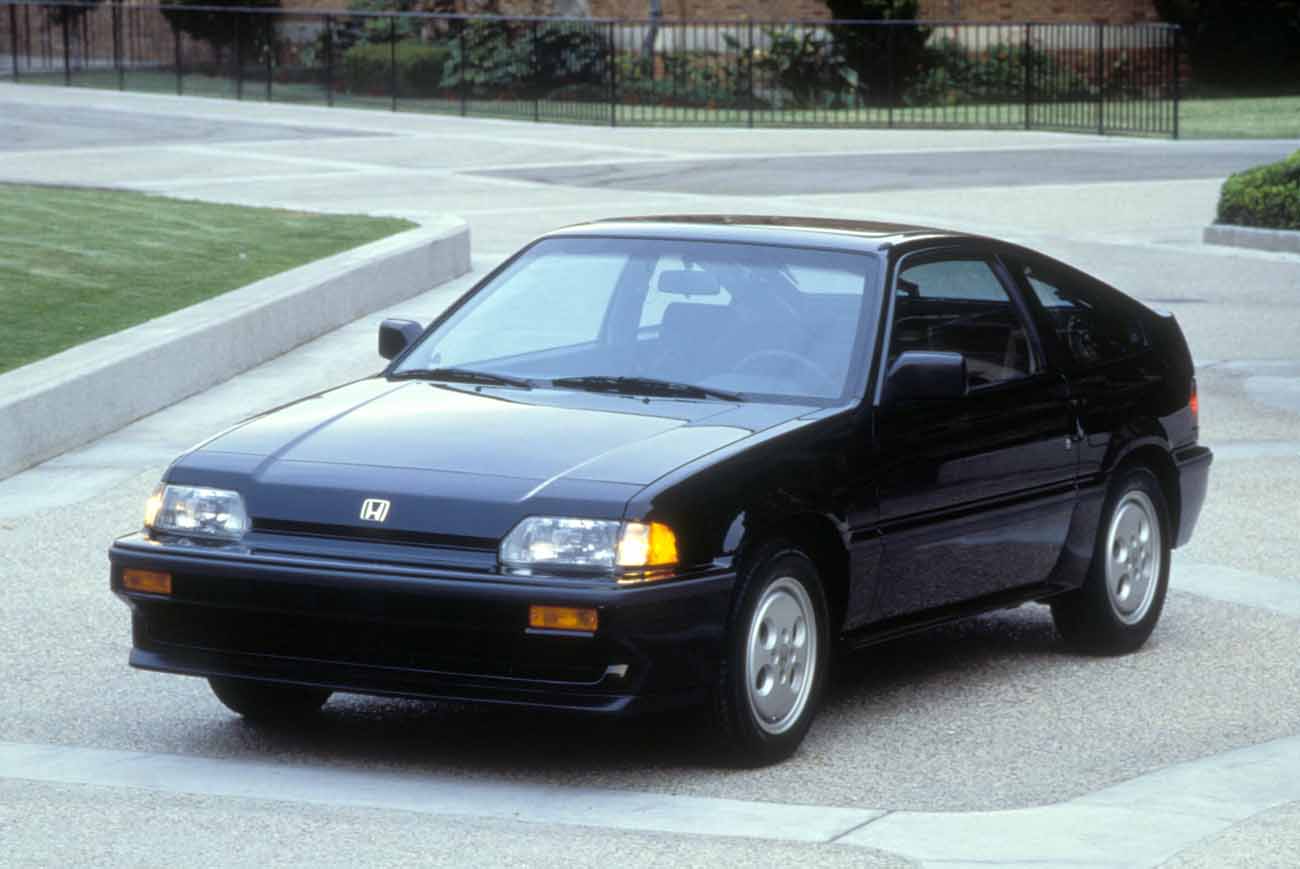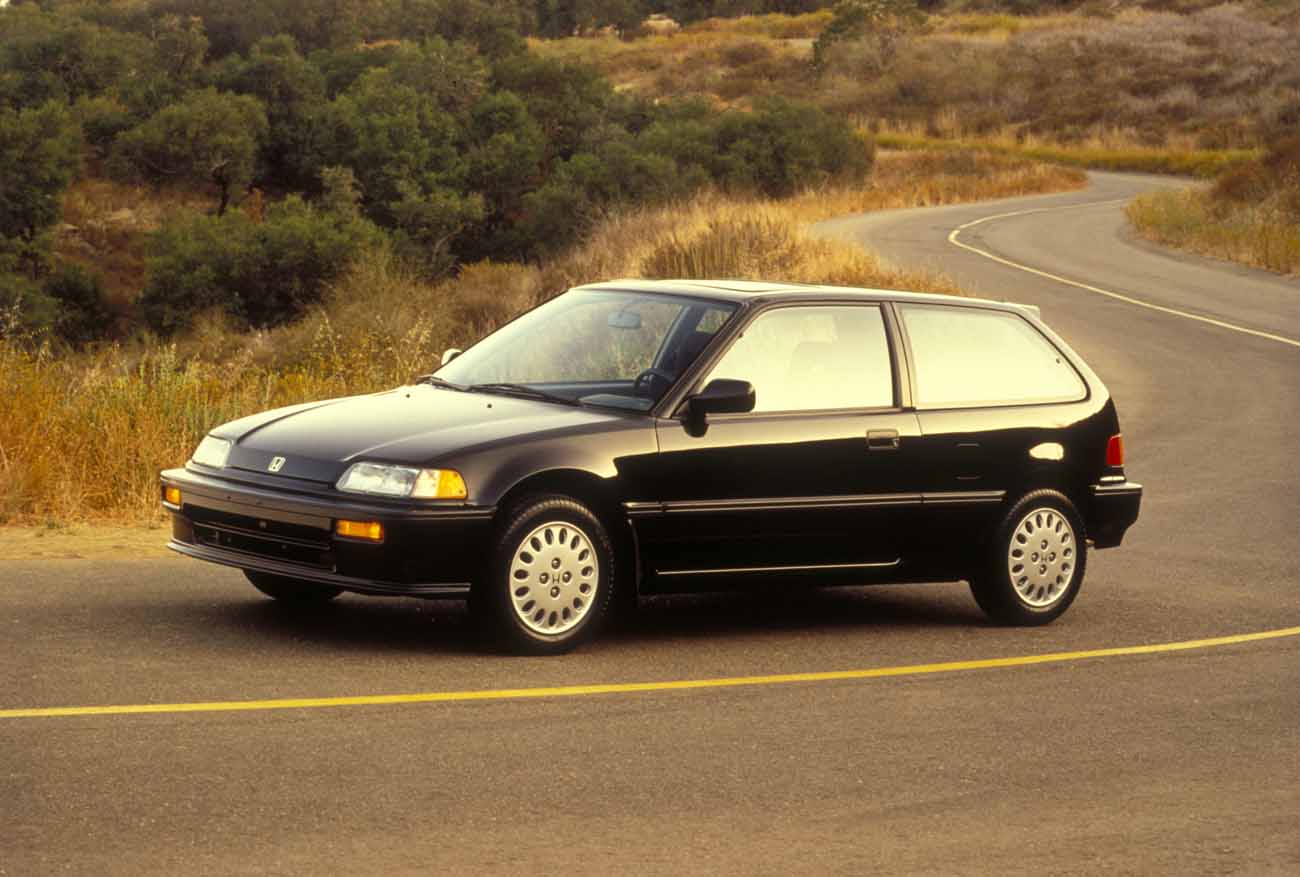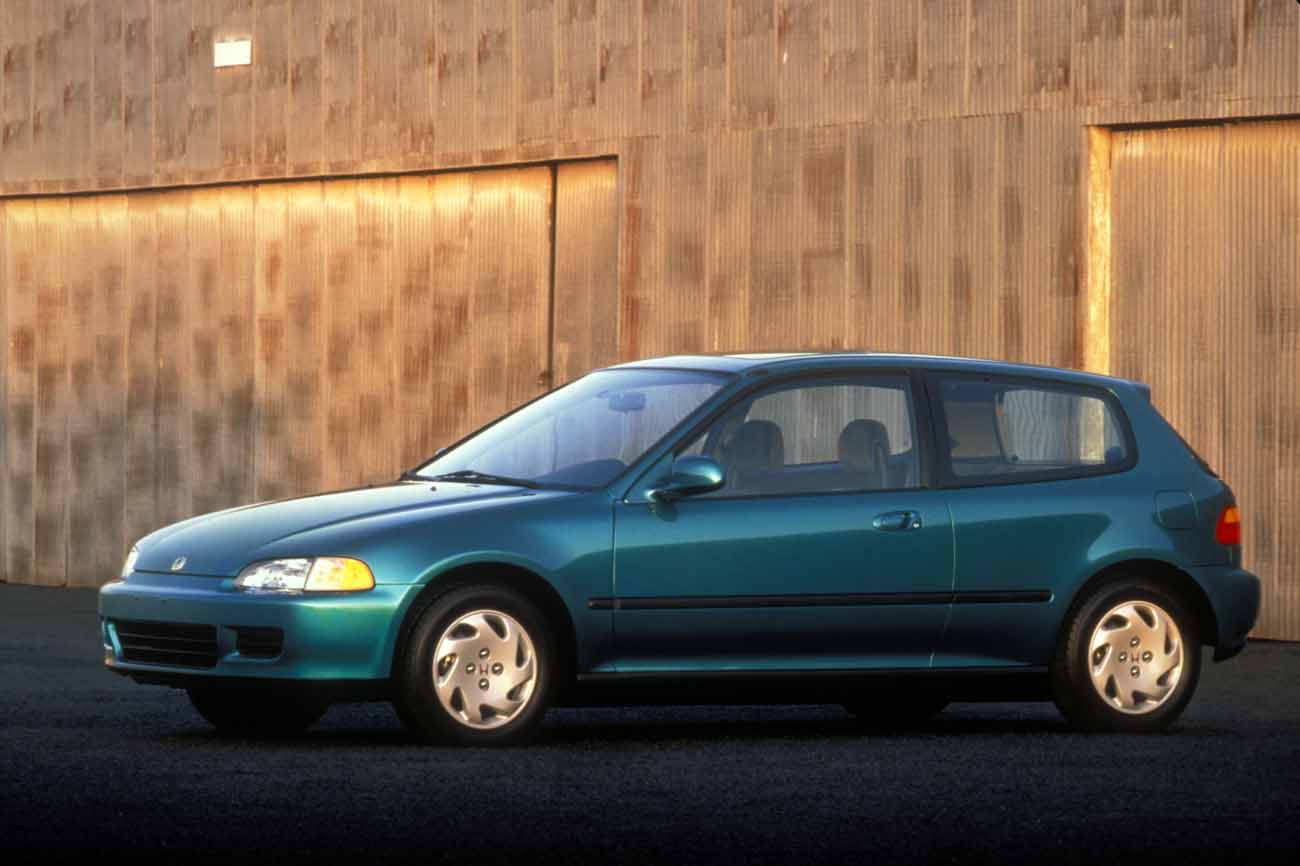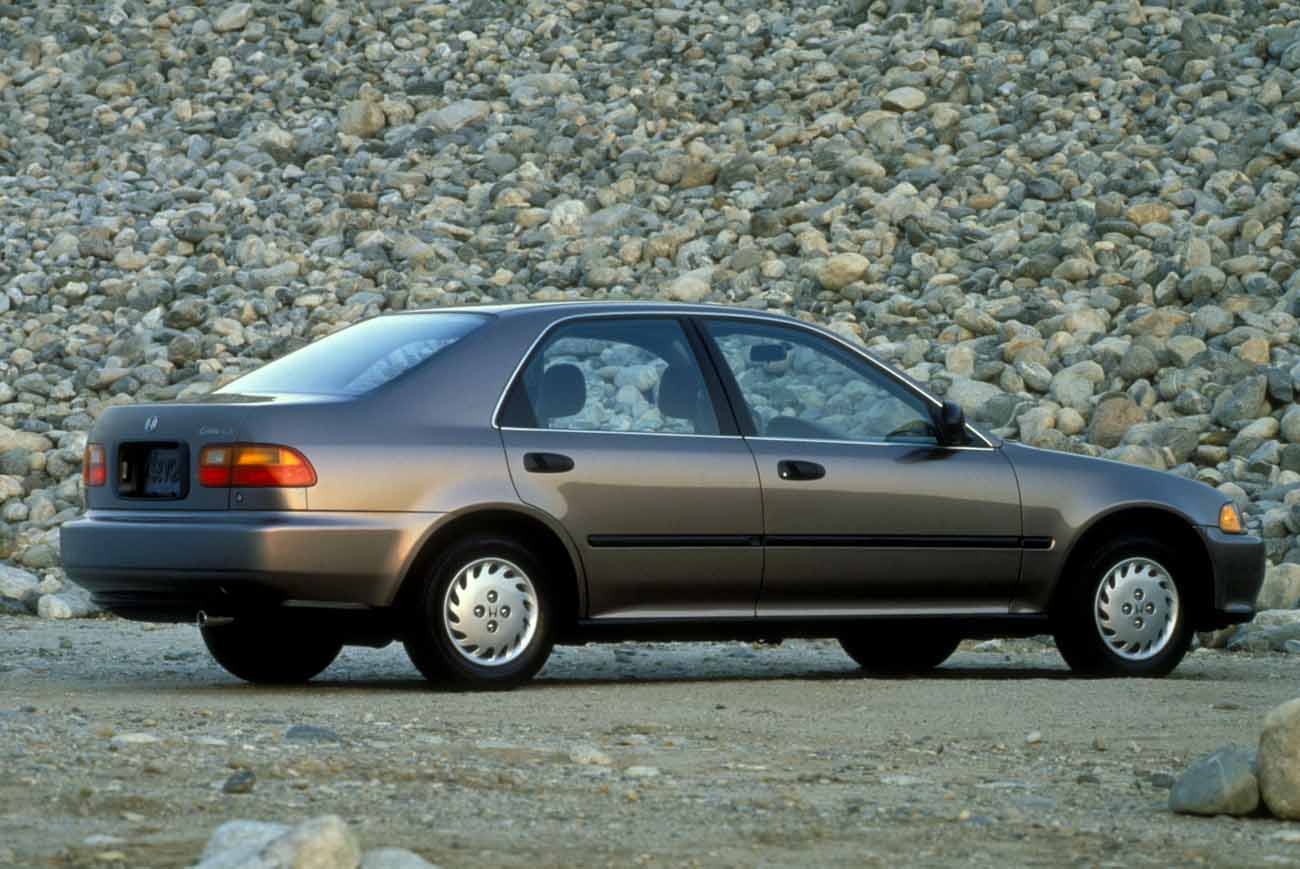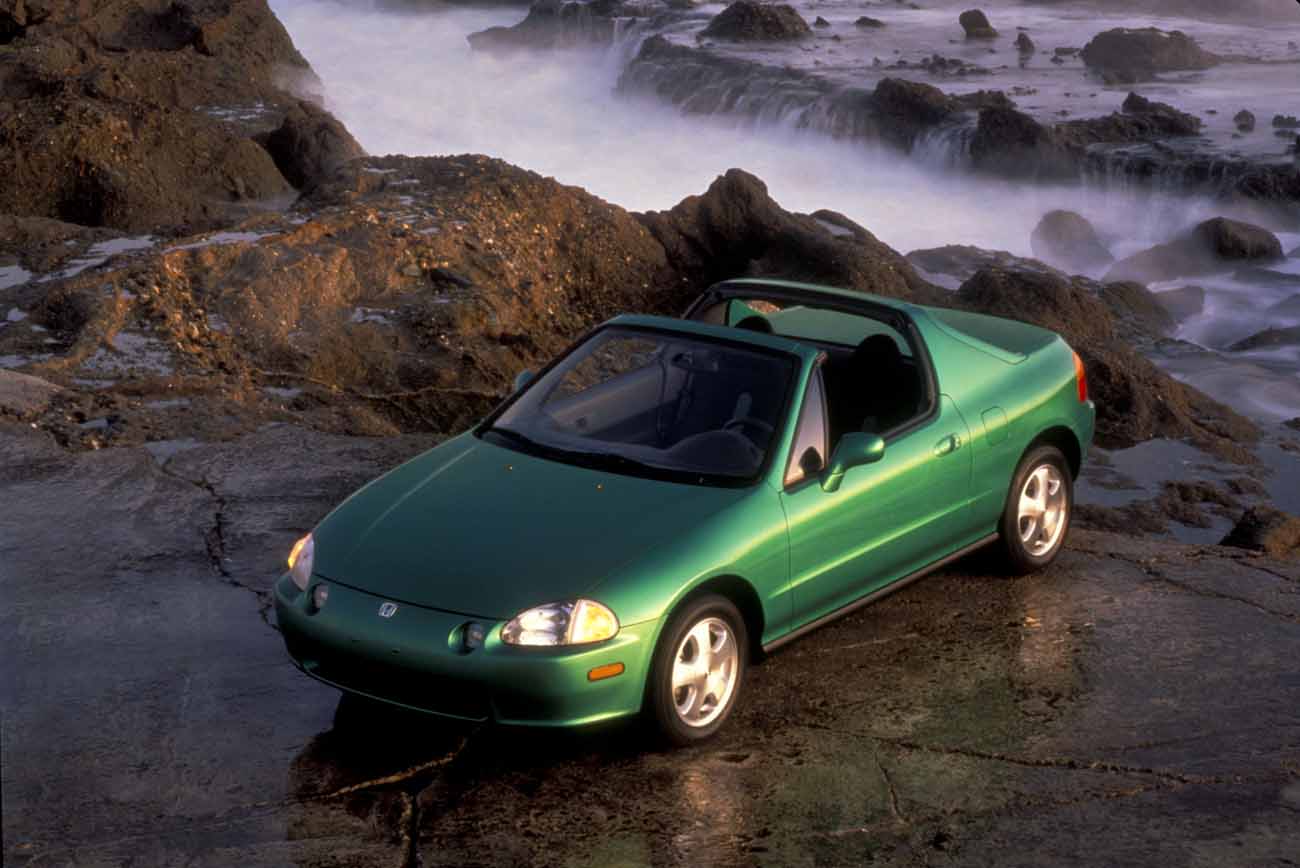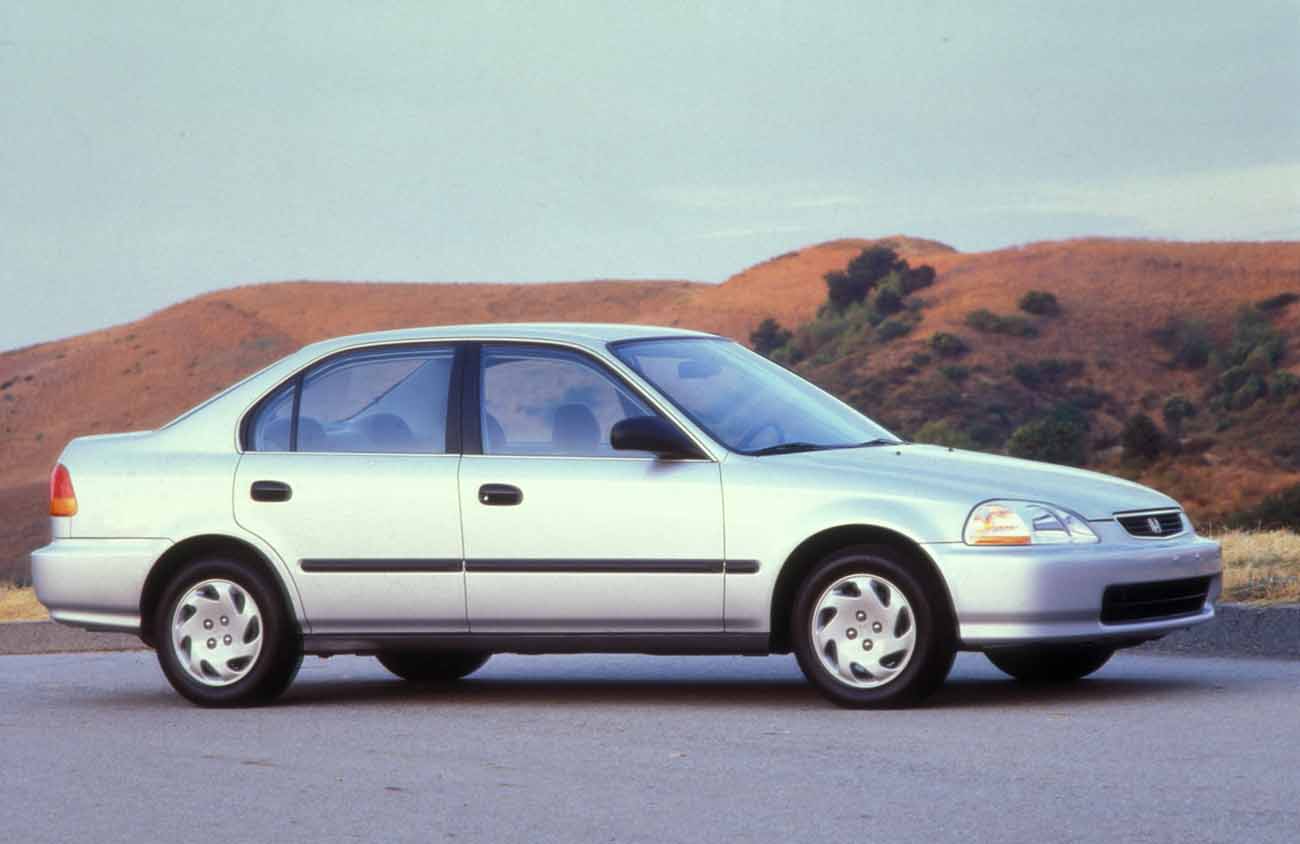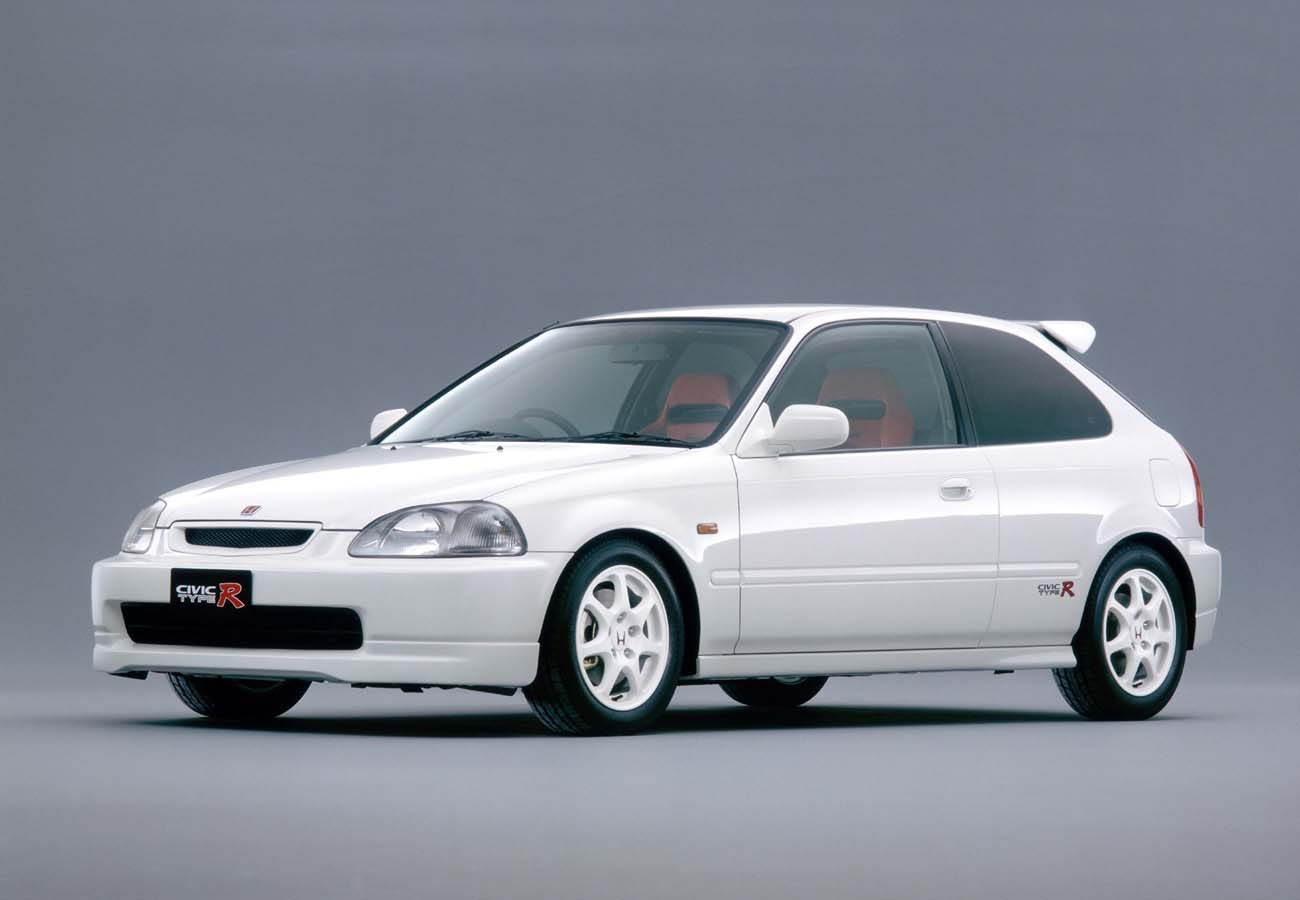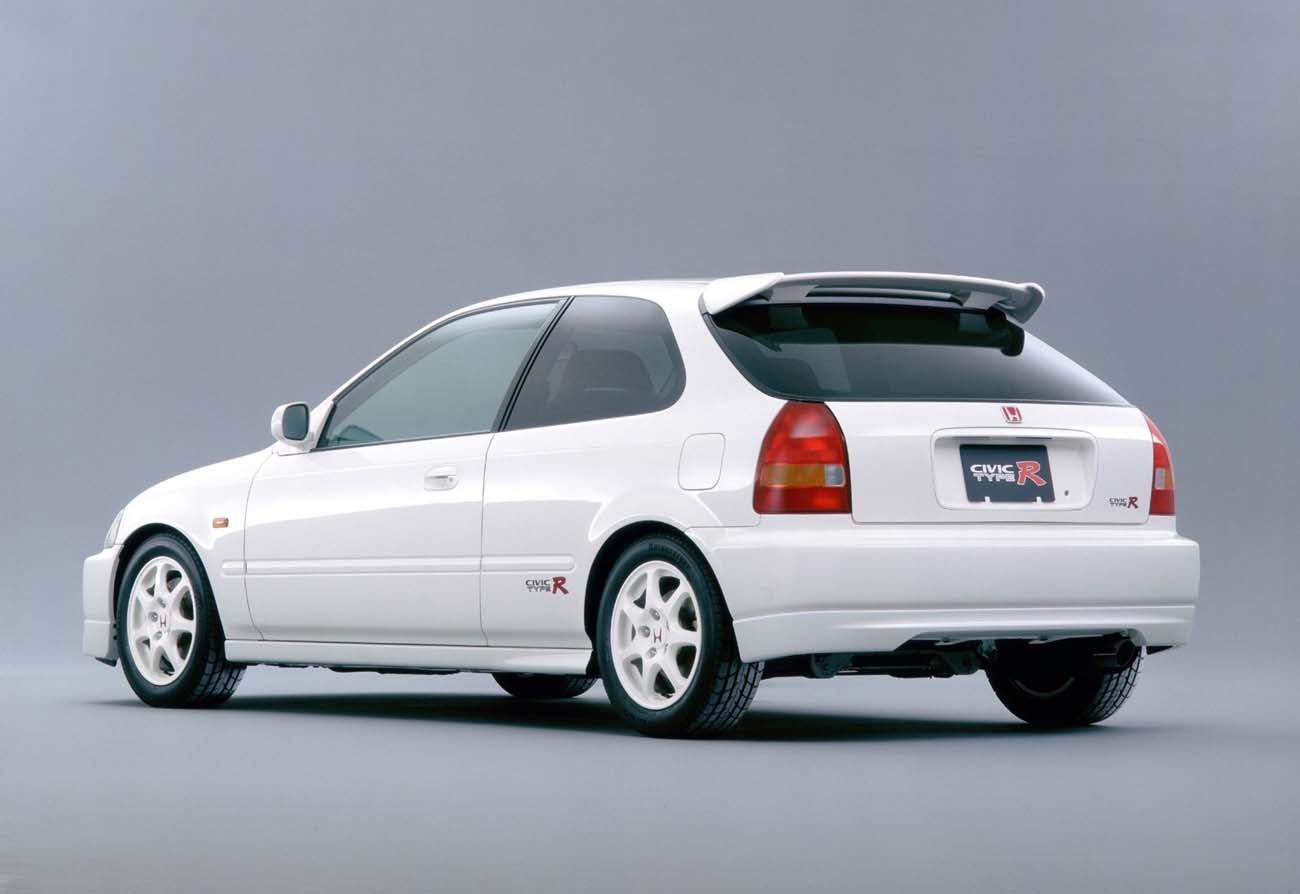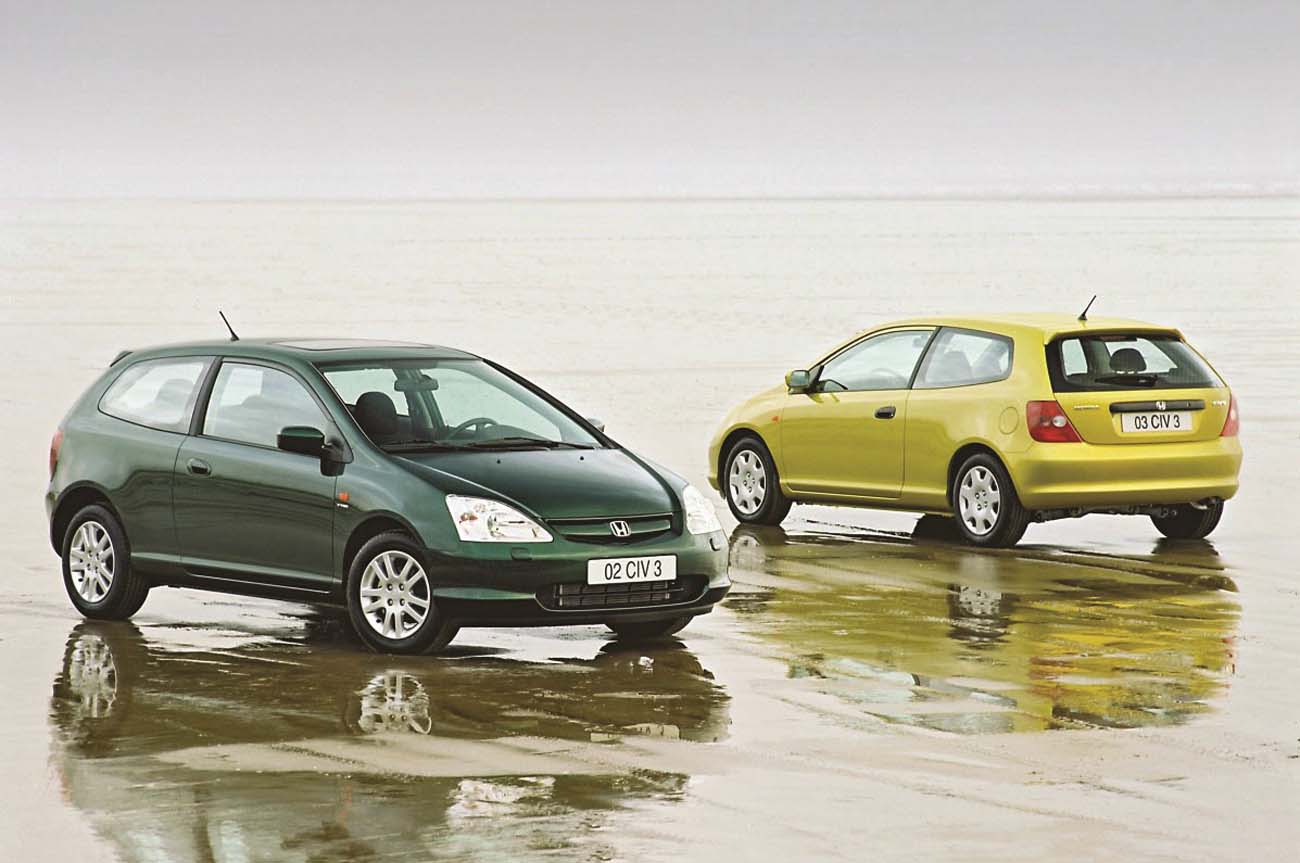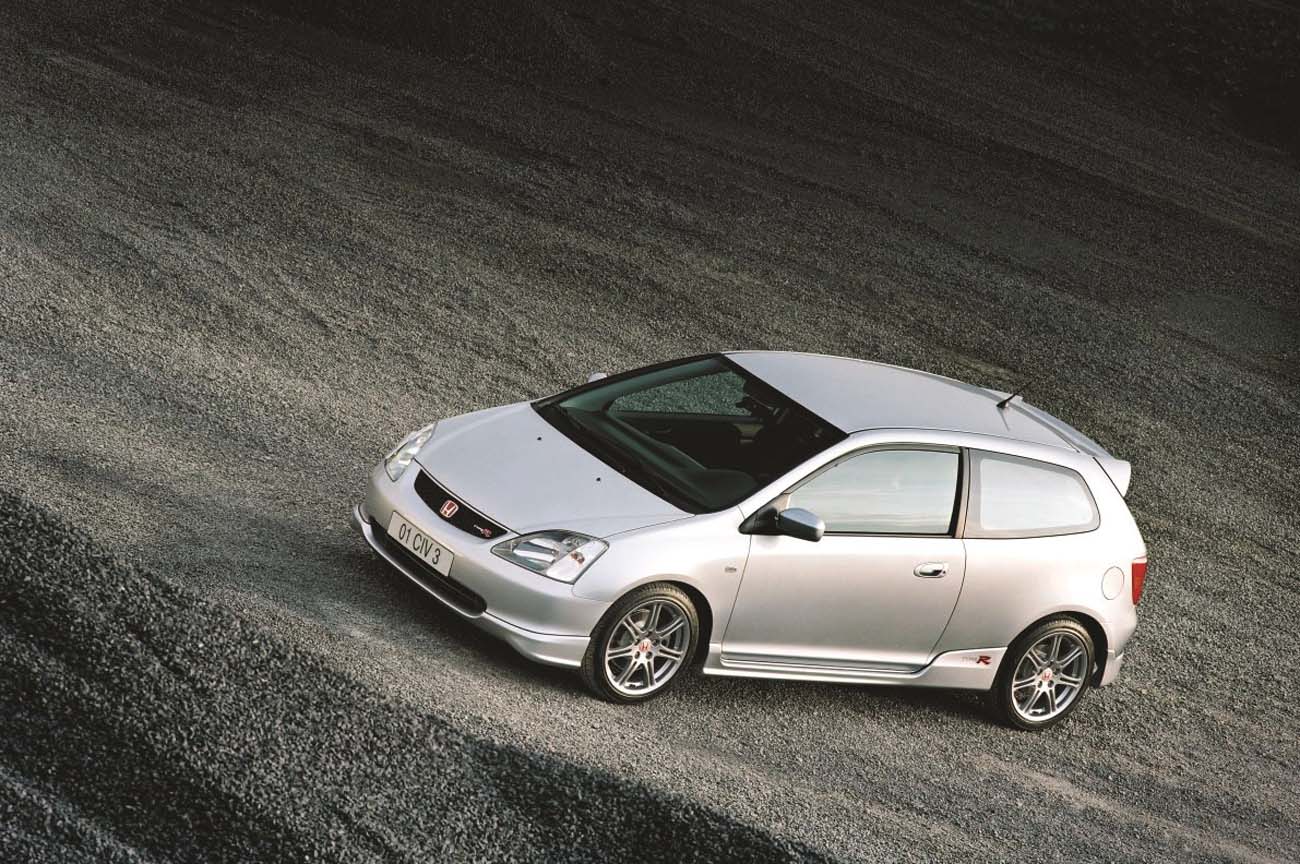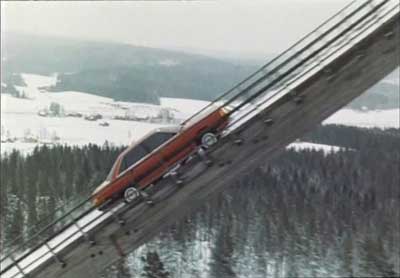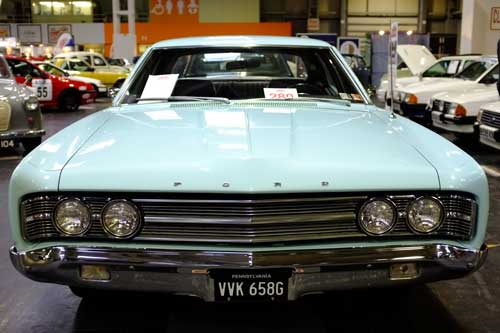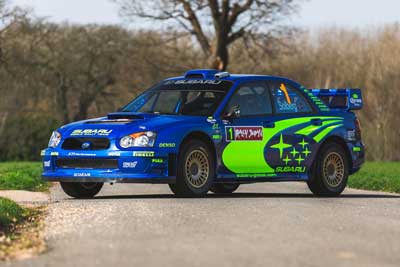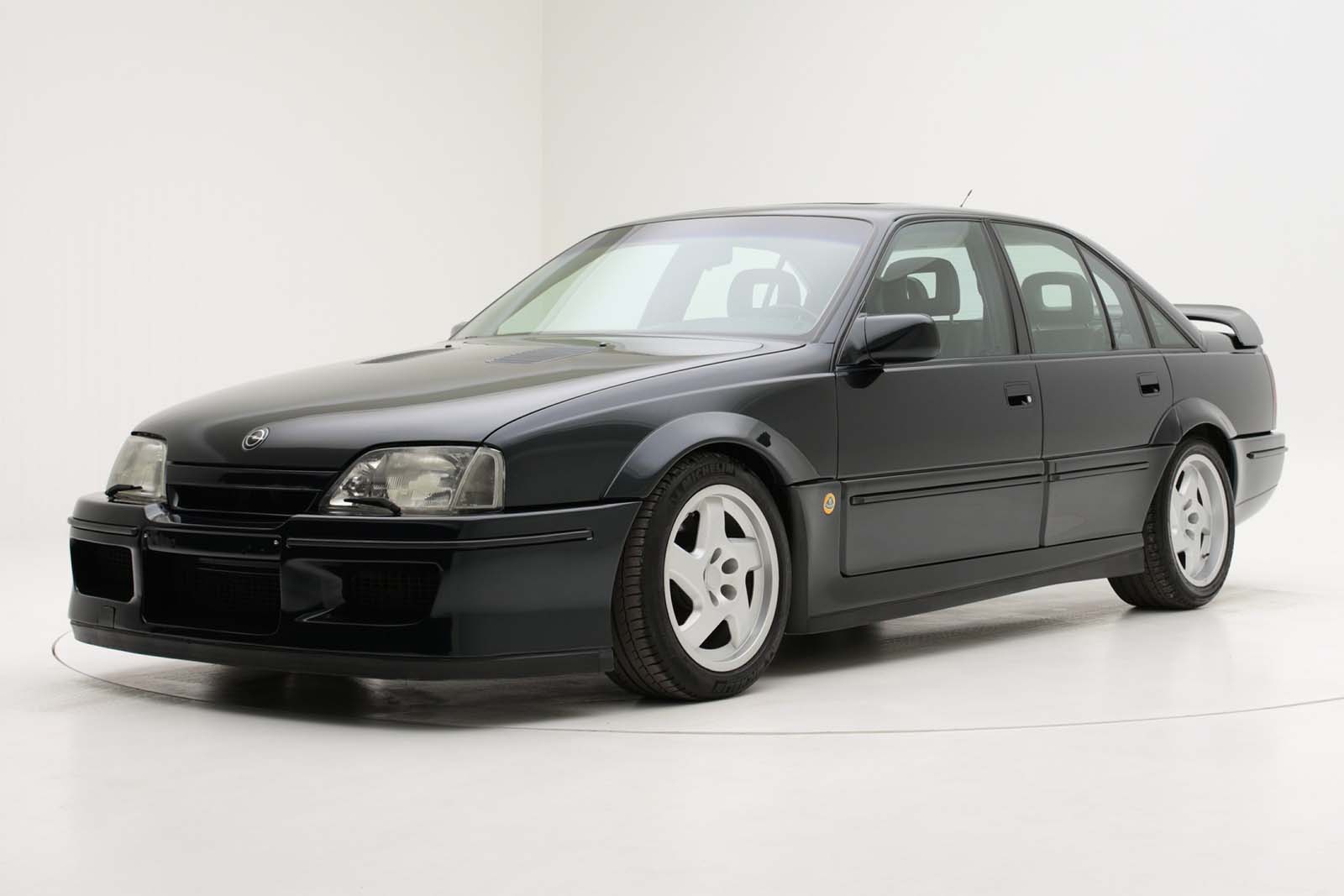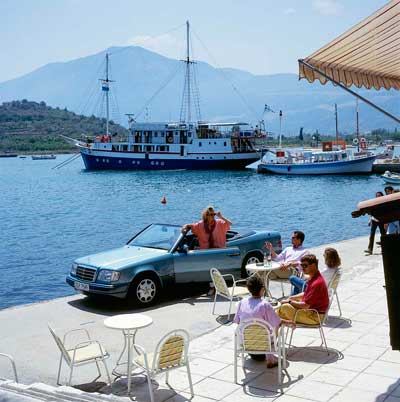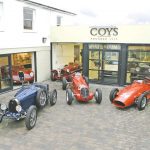
Honda Civic At 50, A Look Back At The 1972 Classic First Generation To The 2000s 7th
This year the Honda Civic turned 50 and with the launch of the 11th gen version we take a look back from the classic first in 1972 to the 7th in the 2000s. Going on to become Honda’s biggest seller and most important model, the car has changed quite a bit from those early days, but has now sold over 30 million units worldwide.
A lot of that success can be attributed to selling the Civic in the USA where the range has found 12.3 million of the total 30 million buyers alone and has been the best selling small car for five decades. In fact, Honda has produced more than 11 million Civics in North America since 1986 and is the country’s third best selling car overall.
The Civic is also one of the world’s most awarded cars, consistently being given the industry’s top honours, which includes the North American Car of the Year three times. It won Car and Driver magazines 10 Best eight times and it has also been given the Motor Trend Car of the Year.
1972 Honda Civic 1st Gen
The first Honda Civic was launched as a small (3,405 – 3,560 mm long and 1505 mm wide), but still a family sized car, meant for more urban motoring but in comfort. Initially offered with an 1,169 cc engine, and then 1,237, 1,335 and 1,488 cc the Civic wasn’t hugely powerful or fast. You could have it with either a four speed manual or the somewhat amusing Hondamatic two speed auto.
With a maximum power of 50 hp in the smallest of the engines, rising to nearly 75 hp for the 1,500, the cars would make reasonable progress. This was down to the light weight, starting from just 600 kg rising to 790 kg.
There was a wagon version in North America (still only 810 kg), a five door model too and a 3 door Civic RS 1,200. This Japanese domestic market only model was around 1 hp more powerful that the 1;500, but did it with just 1,169 cc. It only lasted for one year and came with twin carburettors, a higher compression ratio with high compression pistons and high lift cam. Stiffer suspension too and a 5 speed gearbox.
Unfortunately, the first generation of the Honda Civic had a bit of a rust problem. A reason you don’t see so many of them around now, which is a shame as they are a really nice car. Cars built for Japan didn’t need the same rust proofing as needed by Western countries so arrived somewhat under protected.
A recall driven by the NHTSA, the National Highway Traffic Safety Administration, certainly didn’t help with Honda’s reputation. Lots of parts were either replaced in their first three years or Honda would actually buy back whole cars.
The first gen Civic lasted until 1979 with New Zealand and Indonesia building them from Complete Knock Down kits, CKD.
1979 Honda Civic Gen 2
The second generation Civic arrived in 1979 and was a larger more grown up version of the first now looking more like the Accord. The smallest engine was now 1,335 cc and the 1,488 was retained, though in some markets you could have an 1,170 cc variant. Power was up to 55 hp in the base 1300 and in Europe it had increased to 59 hp, but so had the weight starting at 720 kg. Still a very light car by today’s standards.
The wheelbase increased to 2,250 mm on the 3 door variant and 2,320 mm on the 5. THe fastback sedan was dropped and there was a wagon and a sedan, which was marketed as the Honda Ballade. The Ballade was restyled in the UK and was sold as the Triumph Acclaim
The two speed Hondamatic only lasted a year before being replaced by an improved three speed automatic. The sporty Civic S was available with twin carbs again and more power. The 1500 model was more comfort orientated.
1983 Honda Civic Gen 3
Civic number 3 arrived in late 1983 and was a much angular design, losing the rounded edges of the earlier two generations. This car was what made the Civic into the incredibly popular model that started to outsell the competition in the USA. The rust reputation had gone, and this well-made car also had Honda mechanical reliability.
With a new three valve per cylinder 1500 engine there was a decent performance increase to be had too with power up to 76 hp.
The Civic was awarded the car of the year in Japan and Honda had continued their relationship with British Leyland and the Civic sedan was to become the Rover 200 saloon, while in Japan it remained as the Ballade.
Again, another increase in size and weight, but still a relatively small car, but this further increased practicality. The wheelbase of the hatchback now 2,380 mm and the sedan 2,451 mm.
In 1984 you could even get a 4WD version and there were some with a six speed manual gearbox and in Europe a short stroke engine of 1,200 cc capacity.
The Si version in 1985 became the fastest Civic with a 91 hp version of the 1.5 and at the other end of the spectrum there was an economy model with an eight valve version of the 1.5.
Honda introduced the desirable CRX or CR-X depending on where you were, and this became the real star of the Civic line-up with sharp styling and a completely different dashboard and interior making the car feel like its own model.
Again, with a 1.3 and 1.5 lifted from the hatch, the car was lively enough due to its still relatively light weight. The CRX could be had with a fuel injected 1.5 and just under 100 hp.
The Double Overhead Cam 1.6 produced 135 hp in Japanese Si form and in European markets while the UK and JDM versions had 140 hp.
1987 Honda Civic Gen 4
1987 brought what looked like an update to the 3rd generation civic but was actually quite different, with an increase in body size again and an even lower hood line from nose to windscreen. This was due to the new double wishbone suspension used in the front allowing for the height reduction and giving the Civic really good front end responsiveness.
The Civic was now even sleeker but also more powerful with refinements to the powertrain and improvements to the engines with a new family of 16 valve 1500 units that would now produce up to 92 hp. Fuel injection was now standard across all the range.
The wheelbase had grown again to 2,500 mm, a full 300 mm more than the original, not only making the car more spacious inside, but the added size brough further refinement meaning this was a serious car for any type of journey.
In late 1989 the introduction of a performance model, the SiR saw the 1.6 produce 158 hp and thrive on revs as Honda’s became renowned for. This lively hatchback featured the first VTEC engine with two camshafts, one for economy and another to produce the power. A really neat trick and something that Honda has been using to great effect ever since.
Of course, there would be a sedan, which again was shared with Rover in the UK as the 400 series, but also there was a five door hatch based on the sedan version. The British versions were quite elegant and the larger engined versions shared the Honda powerplants. The Honda Concerto was their take on the executive Rover and offered more luxurious alternative to the Civic.
The Honda sedan was marketed as the Civic EF back home, the Ballade name stuck for South Africa. Mechanically the sedan was the same as the hatchback, only being a little longer in the body, having the additional length in the rear adding 142 mm.
More excitingly the CR-X had evolved into an extremely attractive coupe and is quite possibly the most desirable of all Civic models. Now a model in its own right the second generation car was longer and wider with completely redesigned suspension.
Engine options ranged from the 1.5 SOHC unit to the more familiar 1.6 litre DOHC B16A unit. European cars got 148 hp while the JDM version produced 158 hp in the SiR model.
You could get air conditioning fitted as a dealer option, done after it left the factory in the US. Some even had a power sunroof.
Interestingly there was still an option for an economy model, the 1.5 8 valve, but I bet you’d be hard pressed to find one of them still standard now.
1991 Honda Civic Gen 5
Civic number five appeared in 1991 keeping up the pattern of a complete model replacement every four years. The familiarity of the body shapes overall makes it as obviously a Civic, but again further refinements and another size increase saw the wheelbase grow to 2,576 mm for the hatchback, but 2,621 mm for both the sedan and coupe.
Even though the Civic was getting bigger, Honda used a lot of lightweight materials to offset this and the improvements in aerodynamics made the Civic an economical car. Safety was improved too as by 1994 the Civic had passenger side airbags as standard.
Five speed transmissions were now standard, and the automatic was now a four speed unit. The highest power for the Civic range was the 125 hp 1.6 in EX and Si models.
The sedan was kept and featured a higher rear end than the previous version but differed little from the hatch other than in overall length and wheelbase. But the sedan did spawn and interesting and popular two door coupe, a similar overall size to the sedan but in a more stylish 2 door configuration.
The coupe could be had with the usual range of engines and trim levels and found plenty of buyers in many countries. The Ballade name appeared again and also the Concerto, representing the more up market segment.
Replacing the fantastic 2nd gen CR-X was this new CR-x Del Sol. The open top coupe arrived in 1992 and is considered to be the 3rd in the line CR-x, being badged so in some markets or just Del Sol in others.
The usual range of engines were featured, but for the Japanese market the JDM version came with a screaming 170 hp B16 SiR-II DOHC VTEC engine. Sadly, this was to be the end of the production of the CR-X or true sports coupe variant as Honda had something else planned for the next generation.
For other markets the Del Sol got a major update in 1994 which brought a new 160 hp 1.6 litre engine the B16A3 which owners of other bodysyles realised would fit so you can guess what happened to a lot of them.
1995 Honda Civic Gen 6
Honda’s 6th generation Civic was produced from late 1995 and was to last 5 years breaking the traditional 4 year cycle. The size increased again, but the aerodynamics improved further.
More transmission options were available with the introduction of a CVT, Continuously Variable Transmission. There were more engine options with the GX version being a fleet only option and would run on natural gas. Though if that didn’t appeal you could get a regular economy model with the HX, but as a coupe only and with the aforementioned CVT.
There were hatchback, sedan, coupe and wagon body styles, depending upon where in the world you were. North America again got a wagon where it was thought it wouldn’t be such a strong offering in other markets.
The sedan was just in time to be the basis for the Rover 400, but the 200 would be completely Rover developed as by some time in 1995 Rover had divorced Honda thanks to BMW ownership.
In Europe the Concerto was replaced by a 5 door hatchback based on the Honda Domai in Europe and the Domai replaced the Concerto in Japan.
And for the third time, the Honda Civic was the Japanese car of the year.
Not producing a new model of the CR-X might have been seen as an oversight, but Honda had been working on this, the Civic Type R. After all, those CR-X engined were ending up in hatchbacks anyway.
The Type R was quite something when it appeared, the B16B engine had one of the highest power output per litre for a naturally aspirated car engine with 182 hp at 8,200 rpm from 1,595 cc.
Honda went as far as strategically seam welding parts of the body to improve rigidity. The interior featured Recaro seats with red trim.
For a front wheel drive car of only 1.6 litres it was fast with 0 – 60 mph taking just 6.7 seconds.
2000 Honda Civic Gen 7
By now the Civic had matured into a large compact car capable of seating 5 adults with the associated refinements of a small premium car. The ever increasing size and weight helping with this, but with an ever evolving range of engines helped maintain the performance. It immediately won the Japanese Car of the Year award too.
The new millennia was to bring the 7th generation which was to last until 2005 establiching the new 5 year replacement pattern. This time the wheelbase didn’t grow, but the car was completely different in both body and underneath. Another suspension redesign saw the introduction of a MacPherson strut replacing the double front wishbone seen in earlier cars. It was also the last Civic to offer 4WD, though it did bring in the first of the Hybrid models.
Larger engines, now 1,7 litres brought useful increases in power and torque and a stiffer bodyshell was developed to sharpen up the handling though enthusiasts mourned the loss of the double front wishbone suspension and weren’t as keen.
The usual hatchback, sedan and coupe body styles were offered with the expected trim levels available. But this model saw the reintroduction of the Civic Si with its 160 hp 1.6, which was seen as good news. Though this would be known as the Type S in some markets and would look more like the 2nd generation Type R.
The Type R was only available in Europe and Japan and was built in the Honda Plant in Swindon, England. The 2.0 litre engine produced 197 hp and the car featured the previous treatment of seam welding, the limited slip differential.
A more track orientated JDM version which featured a 212 hp version of the K20 engine and came with a red Recaro interior as in the EK9 version before.
In 2003 the steering was quickened up, the suspension revised and had a lighter clutch and flywheel assembly.
There was even a 30th Anniversary Civic Type R for 2003 to celebrate over 30 years of the Civic name. The car featured red Recaro seats, a red leather Momo steering wheel, air conditioning and privacy glass at the rear.
The 7th gen Civic was replaced in 2005 by the 8th which lasted until 2011, at rend that European cars follow with longer length models, choosing to facelift in the mid cycle of 3.5 to 4 years.
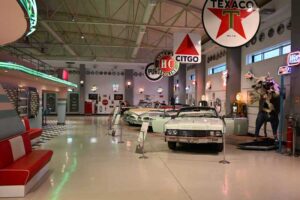
Ural Ataman Classic Car Museum – Istanbul, Turkey
This has to be one of the nicest private collections I have seen, the Ural Ataman Museum in Istanbul, turkey has not only a wide
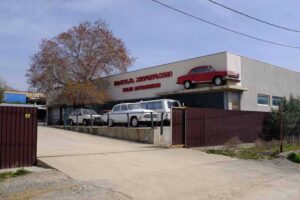
Tbilisi AutoMuseum Car Museum – Georgia
You may not have heard of this, but the small car museum in Tbilisi Georgia really has quite a lot to see. Buried in an
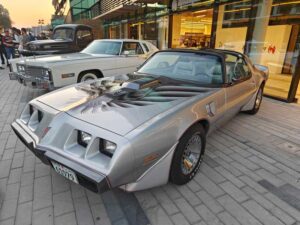
Bahrain Bike Week Classic Car Show December 2024
Bahrain Bike Week is the biggest event of its kind in the Middle East and the 2024 one was no exception. It’s not just the
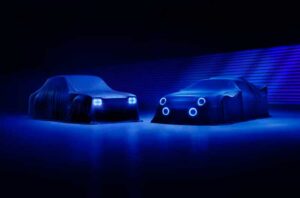
Ford Motor Company Bring Back Group 5 Mk1 Escort & Group B RS200 With The Help Of Boreham Motorworks
Ford have granted a licence to Boreham Motorworks, a division of the DVRN Automotive Group, to produce new versions of not just the Mk1 Escort
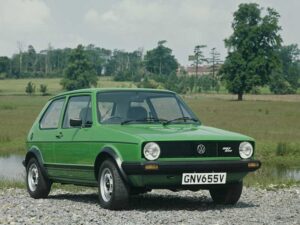
The VW Golf At 50 Years Old
Europe’s number 1 selling car the VW Golf has reached 50 years old this year, starting production on the 29th of March 1974. In
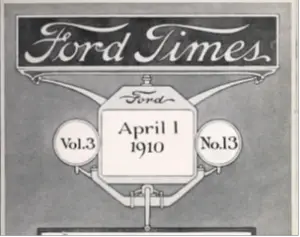
Ford’s Heritage Vault Makes The Ford Times Magazine Available To The Public
Ford’s expansion through the early 20th century was something to behold, the rapid growth of the company and the success of the Model T led


